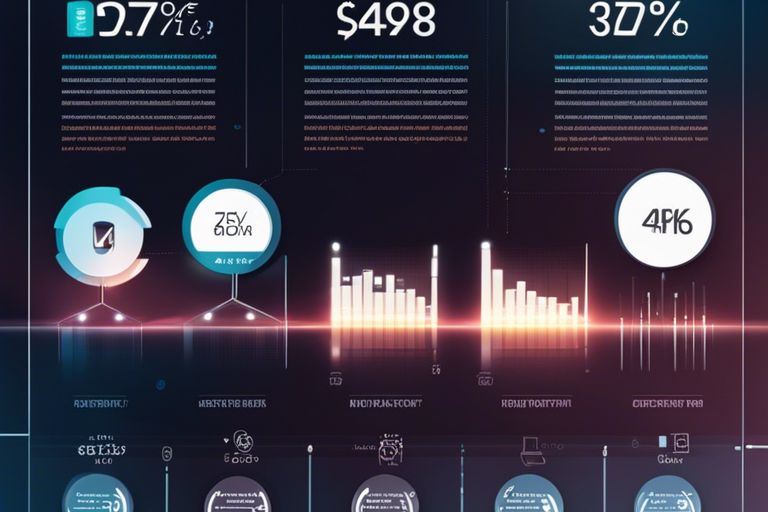There’s a fascinating revolution happening in the world of visual content trends, and it’s all thanks to AI image recognition. As you examine into digital imagery, you will discover how artificial intelligence is transforming the way we create, consume, and interact with visuals. From enhancing search capabilities to personalized recommendations, AI image recognition is at the core of reshaping the future of visual content trends. Let’s explore the profound impact of this innovative technology on your visual experience.
Key Takeaways:
- Enhanced customization: AI image recognition allows for personalized recommendations and customized visual content based on user preferences.
- Improved search functionality: AI image recognition enables more accurate and efficient image search capabilities, making it easier for users to find relevant visual content.
- Automated tagging and categorization: AI can automatically tag and categorize images, facilitating better organization and management of visual content libraries.
- Enhanced user experiences: AI image recognition enhances user experiences by providing more relevant and engaging visual content across various platforms.
- Boosted marketing strategies: AI image recognition can help marketers analyze visual content trends, optimize campaigns, and target audiences more effectively.
The Rise of AI Image Recognition
While AI image recognition may seem like a cutting-edge technology of the present, its roots actually trace back several decades.
Historical Context: From Early Beginnings to Mainstream Adoption
One of the earliest instances of AI image recognition dates back to the 1960s when researchers began experimenting with basic pattern recognition algorithms. Over the years, advances in computing power and the development of sophisticated neural networks laid the groundwork for more robust image recognition systems. Fast forward to today, and AI image recognition has become a ubiquitous part of everyday life, powering everything from social media photo tagging to autonomous vehicle navigation.
Key Players and Breakthroughs in AI Image Recognition
Image recognition has seen significant advancements thanks to the contributions of tech giants like Google, Facebook, and Microsoft. These companies have invested heavily in research and development, pushing the boundaries of what AI can achieve in terms of understanding and interpreting visual data. Breakthroughs in convolutional neural networks (CNNs) and deep learning algorithms have revolutionized how machines perceive and analyze images.
Recognition
You might be familiar with some of the key players in the field of AI image recognition, such as Amazon’s Rekognition, which offers powerful image analysis capabilities for a variety of applications. This technology enables you to identify objects, scenes, and even emotions in images with remarkable accuracy.
Visual Content Trends and AI Image Recognition
Some of the most significant advancements in visual content creation and consumption in recent years have been driven by the integration of artificial intelligence (AI) image recognition technology. This innovation has revolutionized how visual content is both generated and consumed, fundamentally changing the way we interact with images and videos online.
How AI Image Recognition Influences Visual Content Creation
The ability of AI image recognition algorithms to analyze and interpret visual content at scale has opened up new possibilities for content creators. By automating tasks such as image tagging, categorization, and even creative design suggestions, AI is streamlining the content creation process in ways that were previously unimaginable. This not only boosts efficiency but also enables creators to experiment with new styles and formats, ultimately leading to more engaging and diverse visual content.
The Impact of AI Image Recognition on Visual Content Consumption
To understand the impact of AI image recognition on visual content consumption, you need to consider how this technology has transformed the way we discover and engage with visual media. With the help of recommendation systems powered by AI, platforms can deliver personalized content suggestions based on your viewing habits and preferences. This not only enhances user experience but also exposes you to a wider range of visual content that aligns with your interests, ultimately enriching your digital experience.
Visual content trends are continually evolving, and AI image recognition is at the forefront of driving these changes. As you navigate the vast landscape of online visuals, keep an eye out for how AI technologies are shaping the content you see and interact with every day.
Applications and Implications
AI Image Recognition in Advertising and Marketing
With the advancements in AI image recognition technology, advertising and marketing have been revolutionized. Imagine being able to tailor advertisements specifically to your interests and preferences. AI image recognition analyzes patterns in visual content to predict consumer behavior, allowing companies to create targeted campaigns that resonate with you on a personal level. By understanding your likes and dislikes based on the images you interact with, businesses can offer products and services that are more relevant to your needs.
AI Image Recognition in Healthcare and Education
An exciting application of AI image recognition is in healthcare and education. Imagine a world where medical diagnostics are faster and more accurate, all thanks to AI algorithms that can process medical images with precision. Additionally, in education, AI image recognition can personalize learning experiences by assessing students’ responses to visual content. This technology can help educators identify areas where students may need extra support and tailor their teaching methods accordingly, making education more effective and engaging.
Image recognition technology in healthcare can assist doctors in identifying diseases from medical images, leading to quicker and more accurate diagnoses. Similarly, in education, AI can analyze students’ engagement with educational materials and provide insights to teachers about their learning styles and preferences. This data can then be used to create personalized lesson plans, ensuring that each student receives the support they need to succeed.
The Future of Visual Content
Emerging Trends and Opportunities in AI Image Recognition
For those in the creative or marketing fields, understanding the potential of AI image recognition can open up a whole new world of opportunities. From personalized content recommendations to automated image tagging, AI is revolutionizing the way visual content is being curated and shared. As AI continues to advance, we can expect to see even more sophisticated algorithms that can analyze, categorize, and optimize visual content in real-time.
Potential Challenges and Limitations of AI Image Recognition
On the flip side, it’s important to acknowledge the potential challenges and limitations that come with AI image recognition. While AI has made great strides in recognizing objects and patterns, it still struggles with more complex tasks like understanding context or emotions in images. This limitation could pose challenges in areas where human insight and interpretation are crucial, such as in creative storytelling or nuanced visual branding.
Understanding these limitations can help you navigate the evolving landscape of AI image recognition more effectively. By staying informed about the latest developments and being aware of the current boundaries of AI technology, you can make more informed decisions about how to leverage AI in your visual content strategies.
Conclusion
Hence, as you navigate the ever-evolving landscape of visual content trends, it becomes clear that AI image recognition plays a pivotal role in shaping the way we create, consume, and interact with digital imagery. By harnessing the power of advanced algorithms and deep learning systems, AI technology enables us to automate processes, enhance search capabilities, and personalize user experiences like never before.
Embracing AI image recognition in your visual content strategy can help you stay ahead of the curve, foster innovation, and connect with your audience on a deeper level. So, as you begin on your creative endeavors, consider the possibilities that AI presents in revolutionizing the way we engage with visual content in the digital age.




